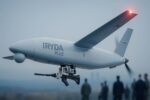Estonia is emerging as a key node in NATO’s eastern defense architecture by fielding both the U.S.-made M142 HIMARS and South Korea’s K239 Chunmoo multiple launch rocket systems (MLRS). This unprecedented dual-platform approach reflects Tallinn’s drive to rapidly scale long-range precision fires while navigating industrial timelines and alliance interoperability.
Operational Context: NATO’s Baltic Flank Reinforcement
Estonia’s decision to acquire both the M142 HIMARS and K239 Chunmoo comes amid growing concerns over Russia’s military posture near the Baltic region. As a frontline NATO state bordering Russia, Estonia has prioritized long-range fires as a core pillar of its deterrence strategy. The dual procurement aligns with broader alliance efforts to reinforce the Suwałki Gap and ensure credible counterstrike capabilities in case of aggression.
The Estonian Defence Forces (EDF) aim to integrate these systems into their newly formed divisional structure under NATO command. Both platforms offer deep-strike potential against high-value targets such as logistics hubs or command nodes up to 300 km away—depending on munition types—thereby complicating adversary planning across Kaliningrad and western Russia.
Platform Overview: Chunmoo vs HIMARS
The U.S.-built M142 High Mobility Artillery Rocket System (HIMARS), developed by Lockheed Martin, is combat-proven in multiple theaters including Ukraine and Iraq. It fires 227 mm GMLRS rockets with ranges up to 84 km and can also launch the MGM-140 ATACMS tactical missile (up to 300 km). Future compatibility with the Precision Strike Missile (PrSM) will extend this range beyond 500 km.
The South Korean K239 Chunmoo system—manufactured by Hanwha Aerospace—is a truck-mounted launcher capable of firing multiple calibers from modular pods. Estonia has opted for a configuration that includes compatibility with both 239 mm guided rockets (~80–160 km range depending on warhead) and future deep-strike munitions such as the Korean Tactical Surface-to-Surface Missile (KTSSM).
- HIMARS: Fires 6× GMLRS or 1× ATACMS; uses U.S./NATO-standard munitions; integrated into Link-16 networks.
- Chunmoo: Fires mixed loads (e.g., 6× KTSSM + 20× unguided rockets); uses proprietary Hanwha munitions; requires separate C2 integration effort.
This mixed arsenal provides strategic redundancy while allowing Estonia flexibility in sourcing munitions amid global supply chain pressures.
Procurement Timeline and Delivery Status
Estonia signed a $200 million deal with Hanwha Aerospace in October 2022 for eighteen K239 Chunmoo launchers along with associated support vehicles and munitions. Deliveries began in late 2023 and are expected to conclude by mid-2025. The contract includes training packages for Estonian crews and initial stocks of guided rockets.
Separately, Estonia joined the U.S. Foreign Military Sales (FMS) program for six M142 HIMARS units in July 2023 at an estimated cost of $500 million including ATACMS missiles and logistics support. Deliveries are scheduled between late 2025 and early 2026 depending on Lockheed Martin production capacity.
This staggered timeline allows Estonia to field operational long-range fires via Chunmoo while awaiting full integration of HIMARS into its force structure.
C4ISR Integration Challenges
A critical challenge lies in integrating two distinct fire control architectures into Estonia’s national command-and-control (C2) framework—and ultimately into NATO’s C4ISR backbone. While HIMARS benefits from native compatibility with Link-16 datalinks, Joint Fires Network protocols, and Allied Fire Coordination Centers (FCCs), Chunmoo operates on proprietary Korean software that lacks out-of-the-box interoperability with Western systems.
To address this gap, Estonia is reportedly working with Hanwha Systems on middleware solutions that bridge Korean fire control software with NATO-standard digital fires networks such as ASCA (Artillery Systems Cooperation Activities). This would enable coordinated fires across platforms during joint operations or exercises like DEFENDER-Europe or BALTOPS.
Munitions Strategy: Diversification vs Standardization
The dual-system approach introduces logistical complexity but also hedges against single-source dependency for precision-guided munitions (PGMs). With global demand for GMLRS skyrocketing due to Ukraine war resupply needs—and ATACMS stocks limited—Chunmoo offers an alternative pipeline via South Korea’s indigenous production base.
Key munition types expected in Estonian service include:
- M30A1 GMLRS-AW: Area effects warhead used by HIMARS; ~84 km range
- M48/M57 ATACMS: Tactical missile; ~300 km range; limited availability
- K33/K38 Guided Rockets: Fired from Chunmoo; GPS/INS guidance; ~80–160 km range
- KTSMM Block-I/II: Deep-strike missile under development; potential future acquisition
This diversified inventory may complicate maintenance but enhances resilience under wartime conditions where resupply routes may be contested or embargoed.
NATO Interoperability Implications
Tallinn’s decision signals growing confidence among smaller allies to pursue hybrid procurement strategies rather than relying solely on U.S.-standard platforms. While this increases integration overheads initially, it could spur innovation in modular C4ISR interfaces across NATO artillery units. Moreover, it reflects Seoul’s emergence as a credible defense supplier beyond Asia-Pacific markets—a trend also visible in Poland’s large-scale acquisitions of Korean tanks and howitzers.
Conclusion: A Calculated Bet on Firepower Agility
The pairing of K239 Chunmoo with M142 HIMARS positions Estonia at the forefront of adaptable long-range strike capability within NATO’s northern tier. While challenges remain around software integration and logistical harmonization, Tallinn appears willing to accept these trade-offs in exchange for rapid fielding timelines and diversified supply chains. In doing so, it sets an example for other small militaries seeking scalable deterrent options without overreliance on any single vendor or alliance member state.










